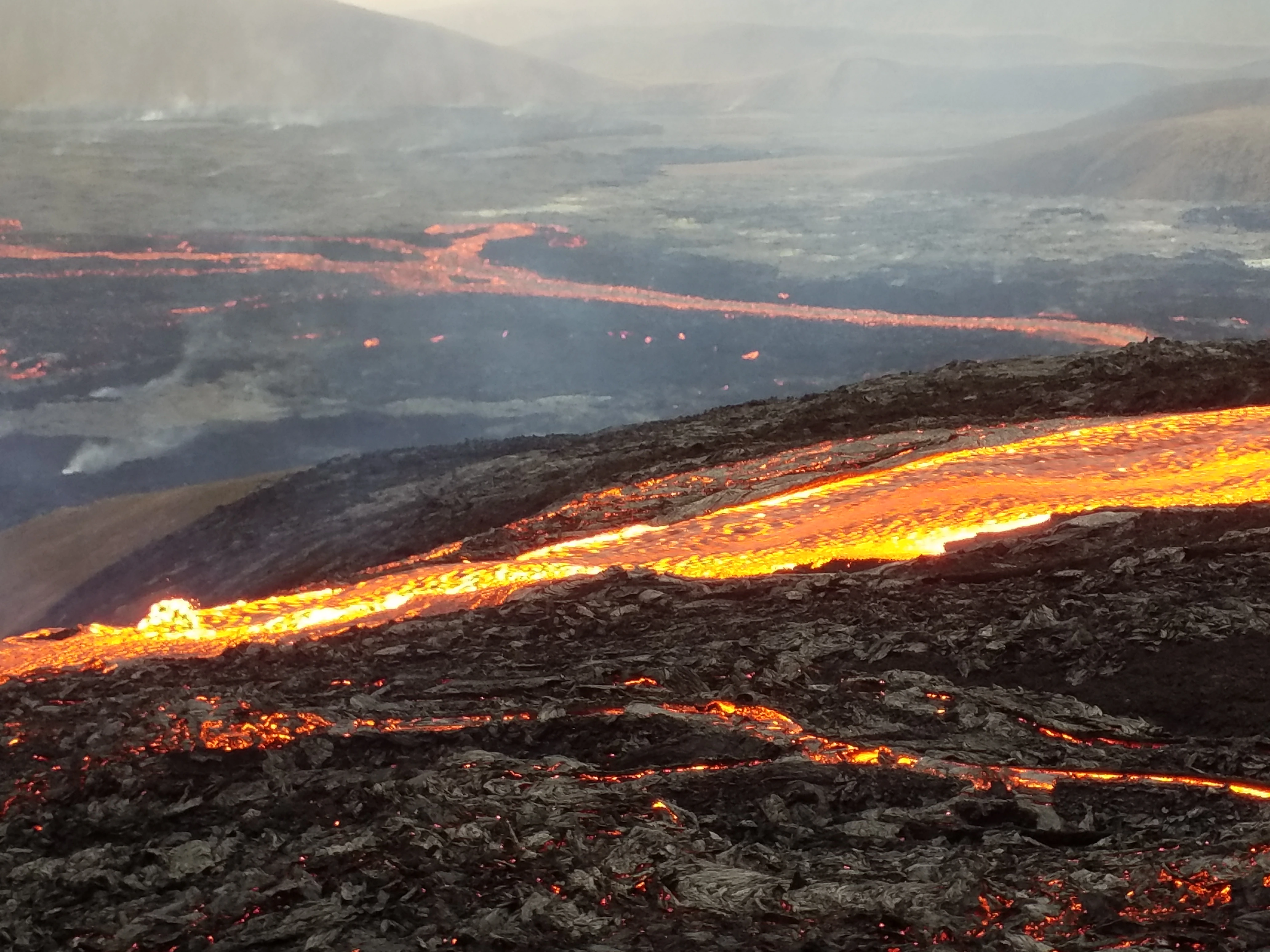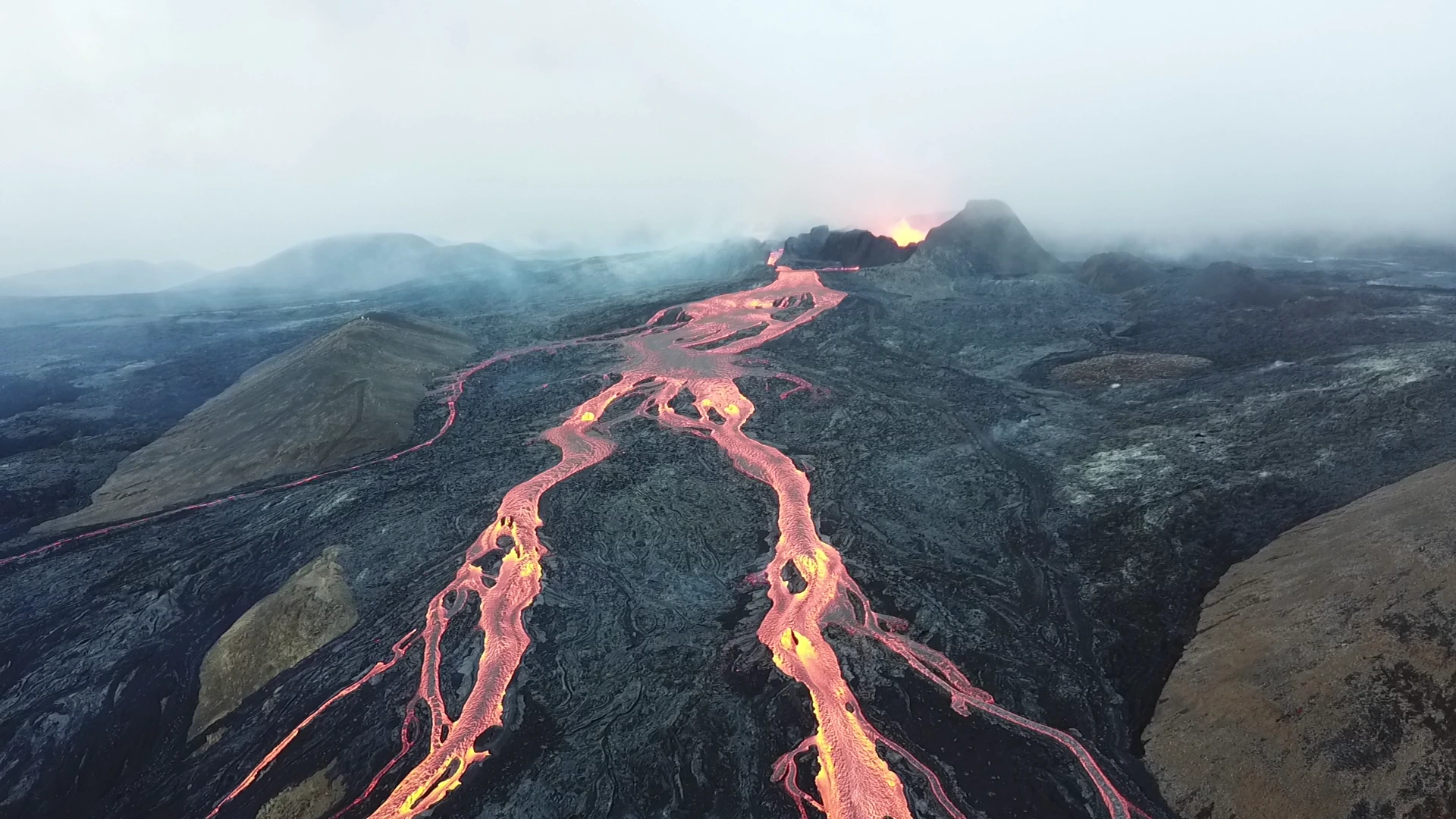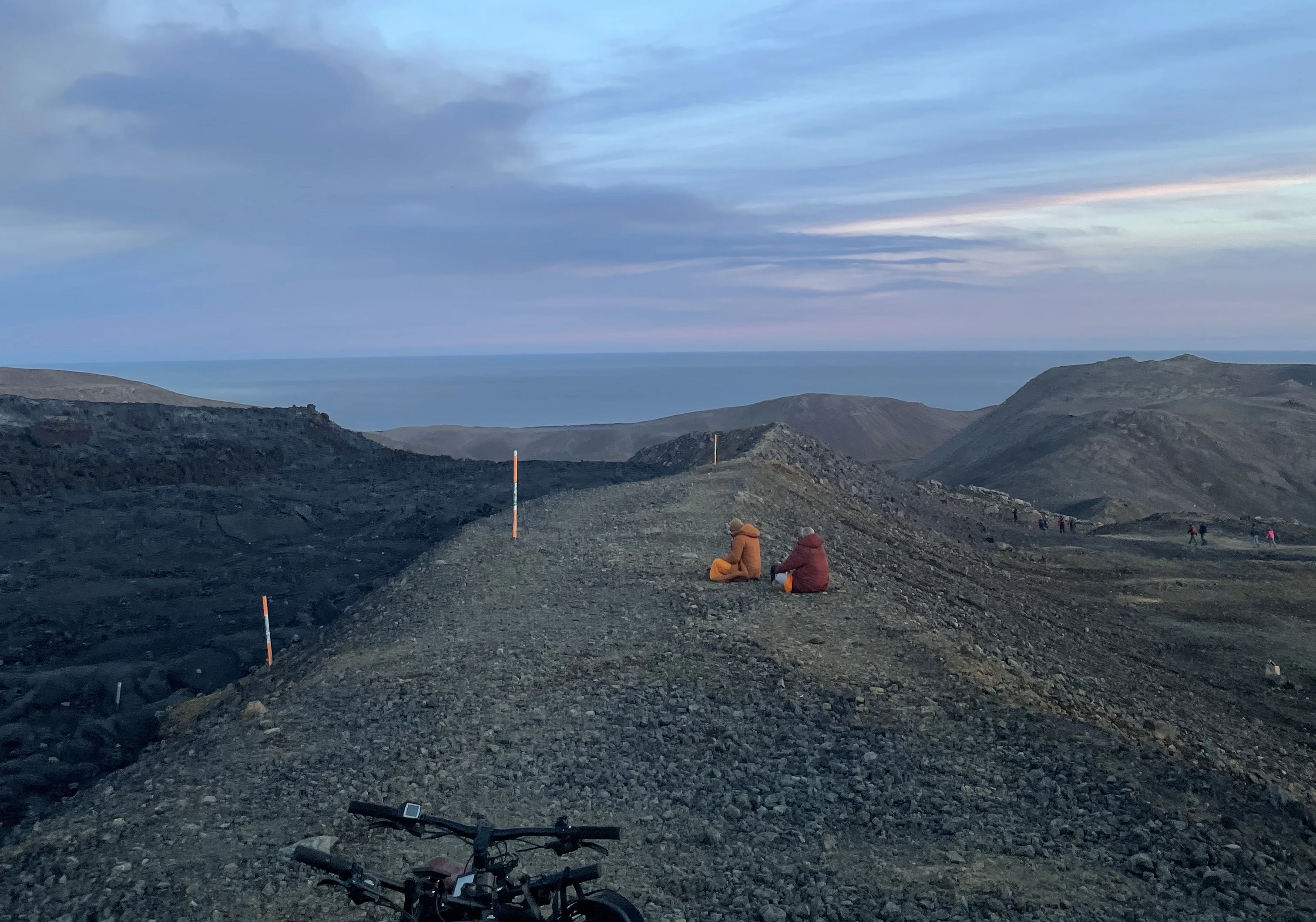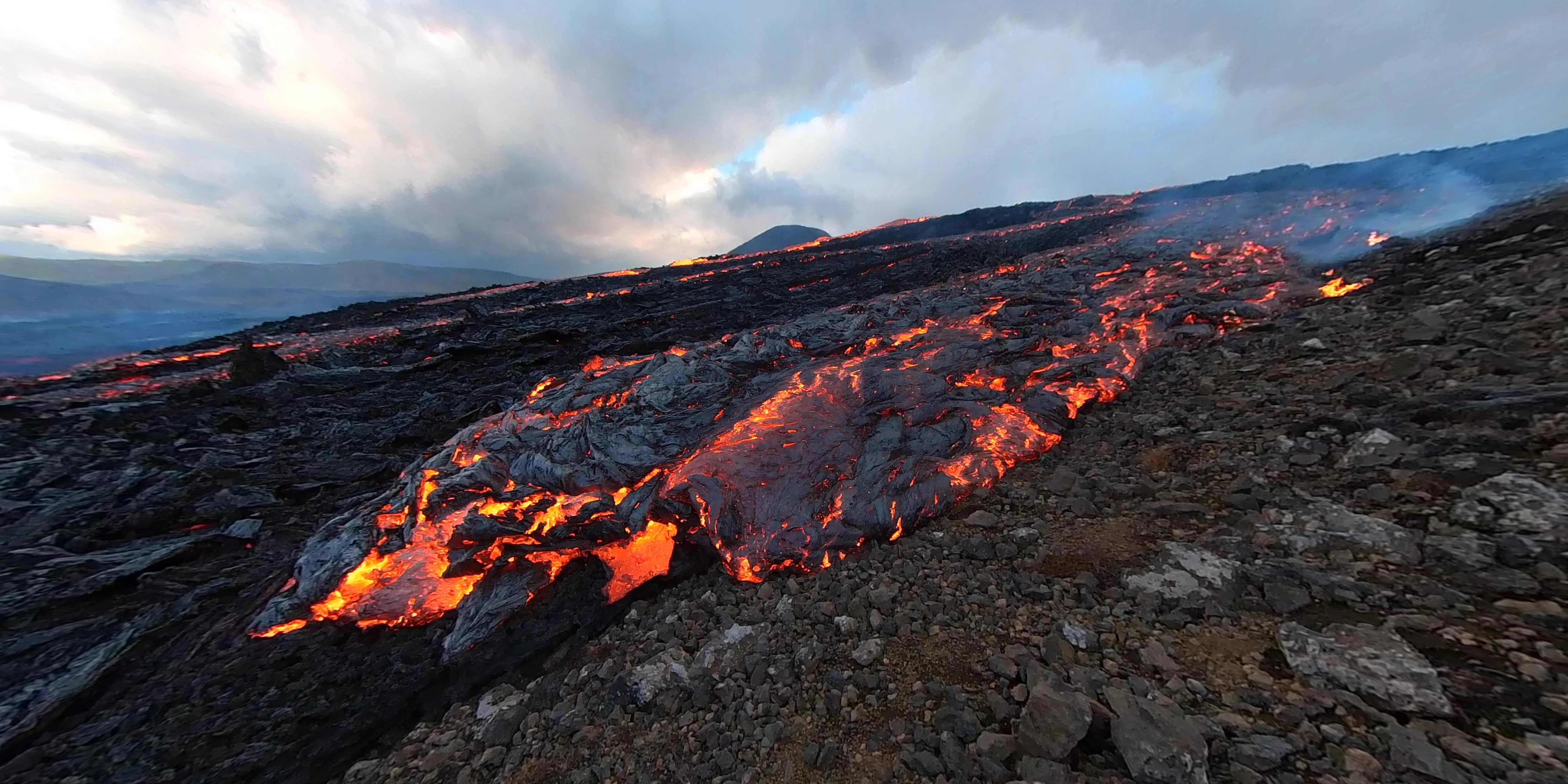




Fagradalsfjall
Fagradalsfjall is a volcano located on the Reykjanes Peninsula in southwestern Iceland. It's a part of a volcanic system that has been quiet for about 800 years but erupted in March 2021, capturing global attention. This eruption was unique because it was relatively gentle compared to other volcanic eruptions, allowing scientists and visitors to get close and observe its activity safely. The area around Fagradalsfjall is known for its lava fields, which are formed when molten rock cools and solidifies. These fields create dramatic landscapes that appear otherworldly. The eruption produced flowing lava that spread across valleys, creating new landforms. Fagradalsfjall's activity offered scientists valuable insights into volcanic behavior and provided an excellent opportunity for public education about geology. The site became a popular destination for tourists and locals alike, who hiked to see the glowing lava and witness nature’s power firsthand. The volcano's name means "Beautiful Valley Mountain" in Icelandic, reflecting the striking natural beauty of the region. Fagradalsfjall continues to be monitored closely by experts to keep people informed about any future volcanic activity.
The Area
Top ways to experience
Fagradalsfjall
What other travelers are saying about
Fagradalsfjall
Beautiful hike with an unforgettable experience walking over a recently erupted active volcano. The solidified black lava fields have steaming vents and openings, so staying on the marked trail is highly recommended. When we visited, rain and fog limited us to the Storhóll viewpoint, about 3 km one way, making a total 6 km hike. Luckily, the drizzle eased at times, giving us clear views of the lava deposits. I even collected a few lava stones as souvenirs.
We hiked 3 km up and slightly past the viewing points. It was bit demanding with one part of the trail of about 0.5 km not well marked and which should be upgraded and repaired. Recommend doing the trail only in good weather with plenty of daylight. It was however, an amazing, once in lifetime experience seeing a recently erupted volcano and being at the edge of an active lava field.
Do not go up on a misty or rainy day. Visibility is poor and signs are somewhat misleading. The viewpoint is still kilometers away from the caldera. You get to see a lava field, but even that is a challenge as you’re sitting next to it if visibility is low. Recommended: take the guided tour instead of going up solo.
Nearby attractions to see
Frequently asked questions
Where is Fagradalsfjall located?
Fagradalsfjall is located on the Reykjanes Peninsula in southwestern Iceland, near the town of Grindavik.
When did the most recent eruption of Fagradalsfjall occur?
The most recent eruption of Fagradalsfjall began on March 19, 2021, and continued intermittently with several phases of activity.
Is it safe to visit the Fagradalsfjall eruption site?
While visiting Fagradalsfjall can be a unique experience, safety precautions are necessary. Visitors should check local advisories for volcanic activity and gas emissions before planning their trip.
What makes Fagradalsfjall's eruptions unique?
Fagradalsfjall's eruptions are characterized by fissure vents and lava flows rather than explosive eruptions, making for more accessible viewing opportunities from a safe distance.
How can visitors prepare for a trip to Fagradalsfjall?
Visitors should wear sturdy hiking boots, bring warm clothing, carry sufficient water and food, and be prepared for changing weather conditions. It's also advisable to have a map or GPS device as trails can be challenging to navigate.










